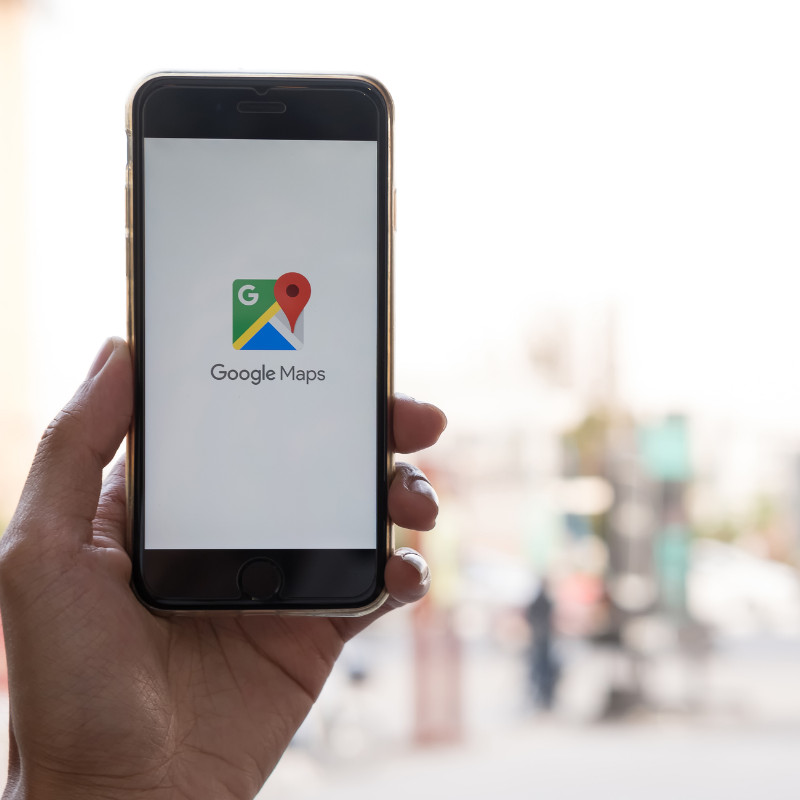
According to Google, local searches on Google and Google Maps drive consumers to 1.5 billion destinations each year. That makes Google Maps a uniquely potent tool for local digital marketing. In fact, many brick-and-mortar businesses now treat Google Maps marketing as its own marketing channel.
Google Maps marketing takes a combination of local SEO, paid search, and reputation management, with an assist from local listings management. In this post, we’ll look at how local businesses can use these tools to boost their visibility on Google Maps.
The Basics of Google Maps Marketing
Before we get into the details of Google Maps marketing, let’s cover some basics.
When we talk about Google Maps marketing, we’re not talking about a single platform. Google Maps results are shown on multiple platforms, including the Google Maps app and the Google Maps mobile and desktop sites. Google also includes Google Maps results in a feature called the Local 3-Pack on Google.com search results, which includes the top 3 local search results from Google Maps.
The good news is that your Google Maps marketing efforts can pay dividends across all of these platforms. The same actions that boost your visibility in the Google Maps app will also boost your visibility on the Google Maps website and in the Local 3-Pack.
But is Google Maps marketing really worth it? That depends on the type of business you run. But for most local businesses, the answer is a resounding YES!
Just consider the following stats:
- 84% of Google users conduct local searches
- 46% of all Google searches are local queries
- 75% of local searches result in a store visit within 24 hours
- 28% of these store visits result in a purchase
- 92% of local searchers choose a business on the first page of results
Based on this data, it’s clear that Google Maps drives a massive amount of purchase traffic. So, let’s examine how Google Maps marketing efforts can boost your organic visibility in local search results.
Organic Google Maps Marketing
There are two types of organic results on Google Maps: proximity results and ranked results. Here’s a quick look at how both work…
Proximity Results. If a user performs a local search with location data enabled on their device, Google will use that location data to serve results based on proximity to the users’ device. In simple terms, this means that if you search for “coffee shop” on the Google Maps app, Google will show you the coffee shops closest to your current location. The closer the coffee shop is, the better it will rank in the results.
Ranked Results. Ranked results in Google Maps include all businesses within a given area, with no preference given to proximity. Google Maps will generally serve ranked results for one of two reasons. The first is when a user has location data disabled, so Google can’t judge their proximity to local businesses. The other is when a user is in one location, but they’re performing a local search for another location (e.g., when a user in Houston searches for “restaurants in Memphis”).
Google Maps Optimization
So, how can you boost your rankings in Google Maps results?
In proximity results, the distance between the user and your business is the biggest ranking factor. Unfortunately, there’s not much you can do to change that. However, if you have strong Google Reviews and an excellent Google My Business profile, you can leapfrog nearby competitors in proximity results.
For ranked results, optimizing for Google Maps can give you a significant boost. These results are mostly based on your Google Reviews and Google My Business profile. So if you optimize these two areas, you can dominate ranked results.
For higher rankings, your Google Maps marketing strategy will need to focus on these three areas:
- More & Better Reviews. The higher your average rating on Google Reviews, the higher you’ll rank on Google Maps. But Google also rewards businesses based on their volume of reviews. A 4.4 rating based on 100 reviews is more valuable than a 4.6 rating based on 10 reviews.
- Optimized GMB Profile. Google rewards businesses with rich Google My Business profiles by awarding them higher positions in Google Maps. Make sure that your profile is as detailed as possible and includes multiple photos.
- Local Listings Management. To avoid confusing Google, you need to make sure that your NAP (name, address, and phone number) are listed exactly the same across the internet. If your NAP is inconsistent from one website to another, Google may exclude your business from Google Maps listings. Alternatively, it might overwrite your preferred NAP with one that it scraped from another website.
Paid Google Maps Marketing
Every local business should invest in a strong organic strategy for Google Maps marketing. But once you’ve done this, there’s an easy way and cost-effective way to further boost your visibility: local search ads. These ads appear at the top of local search results on Google and Google Maps, ahead of organic results.
Local search ads are part of Google Ads. So if already have a Google Ads account, it’s easy to start advertising through Google Maps. However, you’ll need to make sure that you have location extensions enabled on your Google Ads account, and you’ll need a complete Google My Business profile. When running local search ads, you’ll also need to use location targeting, bid by location, and optimize your keywords for local search.
Starting in January of 2018, Google introduced three new features to local search ads that can be used for Google Maps marketing.
- Promoted Pins. In addition to displaying your ad in Google Maps results, Google will display a custom pin with your logo in the Google Maps display.
- In-Store Promotions. If you’re running an in-store promotion, you can list this promotion in your local search ad.
- Local Inventory Search. Users can tap a button to search your store’s inventory and find out if a specific product is in stock.
If you’re just introducing local search ads to your Google Maps marketing strategy, we suggest starting with basic ads. But if you’ve had success with paid ads on Google Maps, these features could drive additional traffic to your location.

